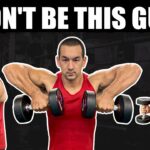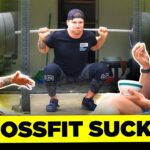When it comes to achieving your fitness goals, a well-structured workout plan is essential. One of the most effective workout routines that can help you build strength, improve endurance, and achieve a balanced physique is a full-body workout. In this article, we will explore what a full-body workout routine is, its benefits, and provide you with comprehensive workout plans for beginners, intermediates, and advanced fitness enthusiasts. Additionally, we will discuss important considerations for those over 40, the role of nutrition, and some key rules to maximize your full-body workout routine.
Jump to:
What is a Full Body Workout Routine?
A full-body workout routine involves targeting all major muscle groups during a single workout session. This means you’ll be working your upper body, lower body, and core muscles all in one go. This approach contrasts with split routines, where specific muscle groups are trained on different days. The idea behind a full-body workout is to provide adequate stimulus to each muscle group while ensuring you maintain overall balance and symmetry.
Benefits Of A Full-Body Workout
- Efficiency: Full-body workouts maximize the use of your time by targeting multiple muscle groups in a single session.
- Increased Calorie Burn: Engaging multiple muscle groups simultaneously can help you burn more calories, making it an excellent choice for weight loss and fat burning.
- Improved Muscle Balance: Regular full-body workouts can help prevent muscle imbalances by consistently working all muscle groups.
- Enhanced Recovery: Since you’re not overloading a single muscle group, recovery time is often quicker compared to split routines.
- Functional Strength: Full-body workouts mimic real-life movements, promoting functional strength that can be applied to daily activities.
- Variety: The versatility of full-body workouts allows for a wide range of exercises, keeping your routine engaging and challenging.
The Full Body Workout Plan (Overview)
Let’s dive in deep with these full-body workout routines from beginner to advanced.
Beginner’s workout routine:
Day 1: Full body
- Squats: Stand with your feet shoulder-width apart, ensuring your toes point slightly outward. Keep your chest up and your back straight as you lower your body by bending your knees. Go as low as you can comfortably, ideally until your thighs are parallel to the ground. Push through your heels to return to the starting position.
- Push-ups: Start in a plank position with your hands slightly wider than shoulder-width apart. Lower your body by bending your elbows until your chest almost touches the ground. Push back up to the plank position.
- Bent-over rows: Hold a dumbbell in each hand, stand with your feet hip-width apart, and slightly bend your knees. Bend forward at your waist while keeping your back straight. Let the dumbbells hang at arm’s length. Pull the dumbbells up to your lower ribcage, squeezing your shoulder blades together, and then lower them back down.
- Planks: Begin in a push-up position, but with your weight on your forearms instead of your hands. Keep your body in a straight line from head to heels, engaging your core muscles. Hold this position for as long as you can, aiming to increase your time with each workout.

Day 2: Full body
- Deadlifts: Stand with your feet hip-width apart and a barbell in front of you. Bend at your hips and knees, keeping your back straight, and grip the barbell with your hands shoulder-width apart. Push through your heels as you lift the barbell by extending your hips and knees, keeping it close to your body.
- Bench press: Start this exercise by lying on a flat bench with your feet flat on the floor. Grip the barbell slightly wider than shoulder-width apart and lower it to your chest. Push it back up to the starting position, keeping your back and head on the bench.
- Lunges: Stand with your feet together and take a step forward with one leg, bending both knees to form two 90-degree angles. The back knee should hover just above the ground. Push back with your front leg to return to the starting position, then switch legs.
- Russian twists: Sit on the floor with your knees bent and your feet flat. Lean back slightly and lift your feet off the ground. Hold a weight or medicine ball with both hands and twist your torso to the right, bringing the weight beside your hip. Return to the center and then twist to the left.
Day 3: Full body
- Pull-ups: Begin by grabbing a pull-up bar with your palms facing away from you. Engage your back muscles and pull your body up until your chin is above the bar, then lower yourself down with control. If needed, use a resistance band or an assisted pull-up machine to help you until you can do this exercise by yourself.
- Leg press: Sit in a leg press machine with your feet shoulder-width apart on the platform. Push the weight up by extending your knees until your legs are almost fully extended, then lower the weight back down, keeping your knees at a 90-degree angle.
- Dips: Use parallel bars or a dip station. Lower your body by bending your elbows until your shoulders are below your elbows, then push yourself back up to the starting position.
- Bicycle crunches: Lie on your back with your hands behind your head, and bring your left elbow towards your right knee while extending your left leg. Alternate sides in a pedaling motion, engaging your core muscles with each twist.
Intermediate workout routine
Day 1: Upper body
- Bench press: Same as in the beginner routine.
- Pull-ups: Same as in the beginner routine.
- Overhead press: Start this exercise by standing with your feet shoulder-width apart and a barbell or dumbbells at shoulder height. Press the weight overhead until your arms are fully extended, then lower it back down, slowly increasing weight as needed.
- Bicep curls: Hold dumbbells with your palms facing forward, and curl the weights towards your shoulders. Keep your elbows close to your sides throughout the movement.
- Tricep dips: Same as in the beginner routine.
Day 2: Lower body
- Squats: Same as in the beginner routine.
- Deadlifts: Same as in the beginner routine.
- Leg press: Same as in the beginner routine.
- Lunges: Same as in the beginner routine.
- Calf raises: Stand on the edge of a step or platform with your heels hanging off. Raise your heels as high as possible, then lower them below the level of the step. Repeat until reps are finished.
Day 3: Upper body
- Rows: Use a cable machine or dumbbells for bent-over rows, pulling the weight toward your lower ribcage. Keep your back straight and engage your lats.
- Push-ups: Same as in the beginner routine.
- Lat pull-downs: Sit at a lat pull-down machine and pull the bar down to your chest, focusing on squeezing your lats.
- Hammer curls: Hold dumbbells with your palms facing each other, and curl the weights towards your shoulders. This variation targets your biceps and forearms.
- Tricep pushdowns: Attach a rope or bar to a cable machine and push it down while keeping your upper arms stationary. Focus on contracting your triceps.
Day 4: Lower body
- Romanian deadlifts: Hold a barbell or dumbbells in front of your thighs, keeping your knees slightly bent. Hinge at the hips while maintaining a straight back, lowering the weights toward the ground. Feel the stretch in your hamstrings before returning to the upright position.
- Leg curls: Use a leg curl machine to flex your knee against resistance, targeting your hamstring muscles.
- Step-ups: Step onto a bench or platform with one foot, then bring the other foot up and back down. This exercise primarily works your quadriceps and glutes.
- Planks: Same as in the beginner routine.
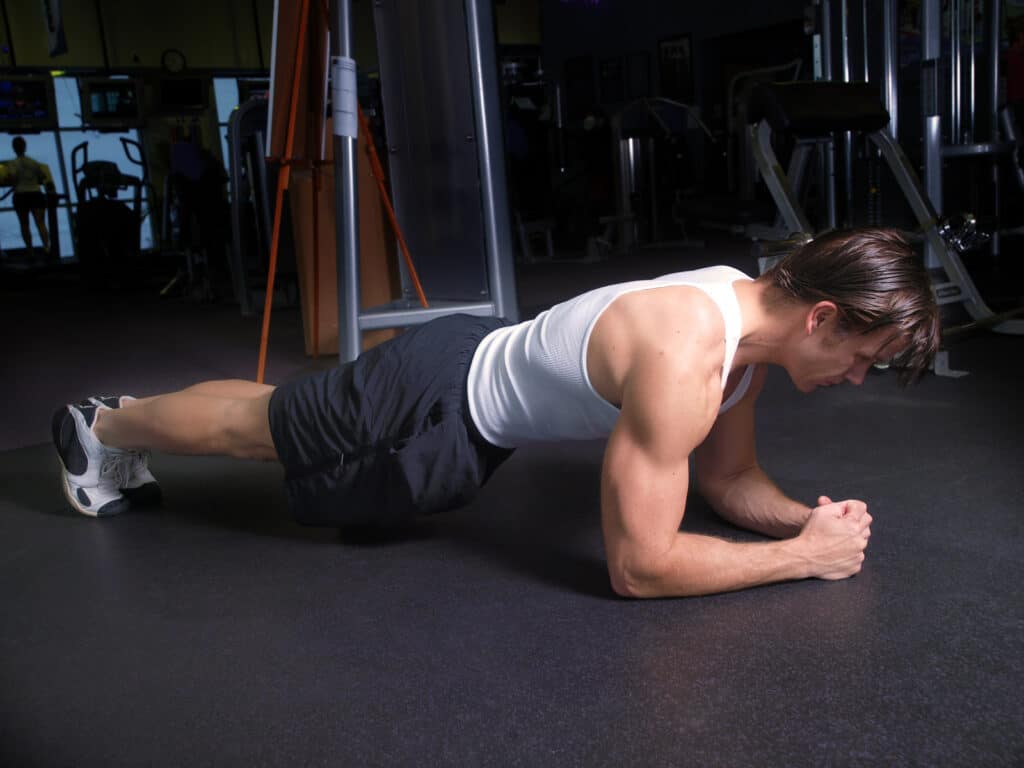
- Russian twists: Same as in the beginner routine.
Advanced Workout Routine (In-Depth):
For advanced fitness enthusiasts, an advanced full-body workout routine should challenge your strength, endurance, and flexibility while promoting muscle growth and overall fitness. Here’s a more detailed advanced workout plan:
Day 1: Strength and Power Focus
- Barbell Squats: Continue working on lower body strength with heavy squats. Aim for 4 sets of 4-6 reps, using a weight challenging enough to reach failure within this rep range.
- Deadlifts: Execute heavy deadlifts to target your posterior chain. Perform 4 sets of 4-6 reps with proper form.
- Bench Press: Focus on increasing your bench press strength with 4 sets of 4-6 reps.
- Pull-ups: Challenge your back and biceps with weighted pull-ups. Use a weight belt or weighted vest for added resistance. Aim for 4 sets of 6-8 reps.
- Leg Raises: Strengthen your core with hanging leg raises or a variation that increases the difficulty. Aim for 3 sets of 10-12 reps.
Day 2: Hypertrophy (Muscle Building)
- Front Squats: Target the quadriceps and core with front squats. Perform 4 sets of 8-10 reps with controlled form.
- Romanian Deadlifts: Focus on muscle contraction and hypertrophy with 4 sets of 8-10 reps.
- Incline Bench Press: Work on upper chest development with incline bench presses. Perform 4 sets of 8-10 reps.
- Barbell Rows: Build a strong upper back with barbell rows. Aim for 4 sets of 8-10 reps.
- Hammer Curls: Develop your biceps with hammer curls, focusing on the eccentric phase of the movement. Perform 3 sets of 10-12 reps.
Day 3: Strength and Conditioning
- Back Squats: Focus on high-repetition back squats to improve muscular endurance. Perform 3 sets of 12-15 reps.
- Sumo Deadlifts: Work on different muscle fibers with sumo deadlifts for 3 sets of 12-15 reps.

- Push Press: Enhance your shoulder and triceps strength with push presses. Aim for 4 sets of 6-8 reps.
- Chin-ups: Engage your biceps and upper back with chin-ups. Perform 3 sets of 10-12 reps.
- Russian Twists: Finish with Russian twists to strengthen your core and obliques. Perform 3 sets of 15-20 reps with a weighted plate or medicine ball.
Day 4: Active Recovery and Mobility
- Yoga or Stretching: Dedicate this day to active recovery and mobility work. Yoga or a comprehensive stretching routine can help reduce muscle soreness, improve flexibility, and enhance overall mobility.
Day 5: Power and Explosiveness
- box jumps: Develop lower body power with box jumps. Aim for 4 sets of 6-8 reps.
- Clean and Jerk: Incorporate Olympic lifting techniques with clean and jerks. Focus on form and perform 4 sets of 4-6 reps.
- Push-ups (Explosive): Enhance upper body explosiveness with explosive push-ups. Perform 4 sets of 10-12 reps.
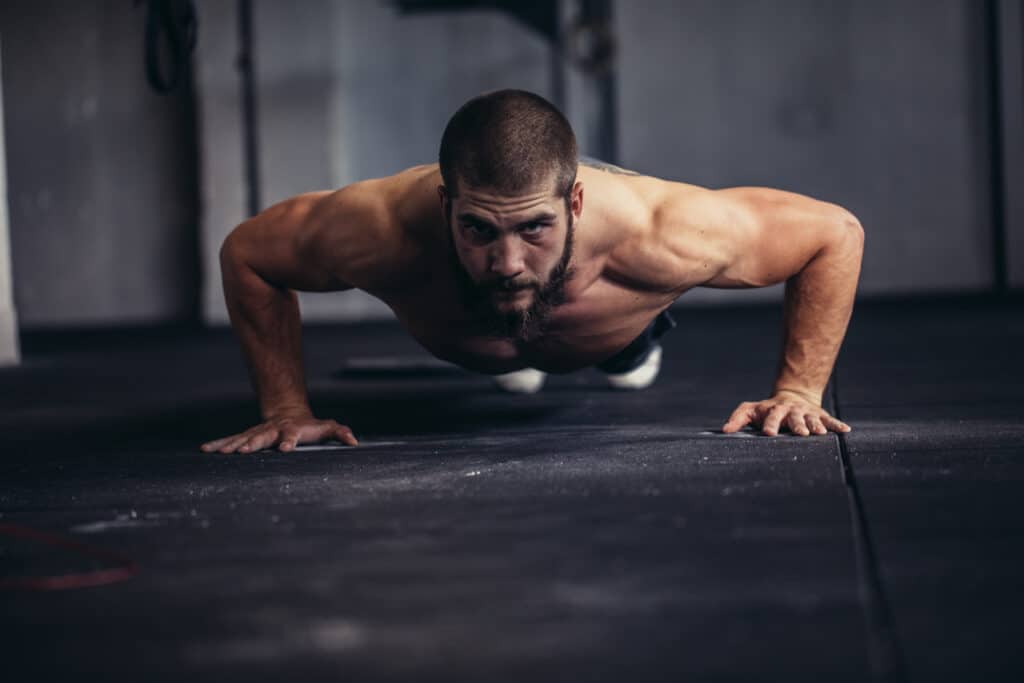
- Pull-ups (Explosive): Similar to push-ups, perform explosive pull-ups for 4 sets of 10-12 reps.
- Planks (Dynamic): Challenge your core with dynamic planks, incorporating variations like side planks or leg raises. Aim for 3 sets of 15-20 seconds per variation.
Day 6: Hypertrophy and Isolation
- Leg Press: Focus on hypertrophy with leg press exercises. Perform 4 sets of 8-10 reps.
- Dumbbell Lunges: Isolate and develop the legs further with dumbbell lunges for 3 sets of 10-12 reps per leg.
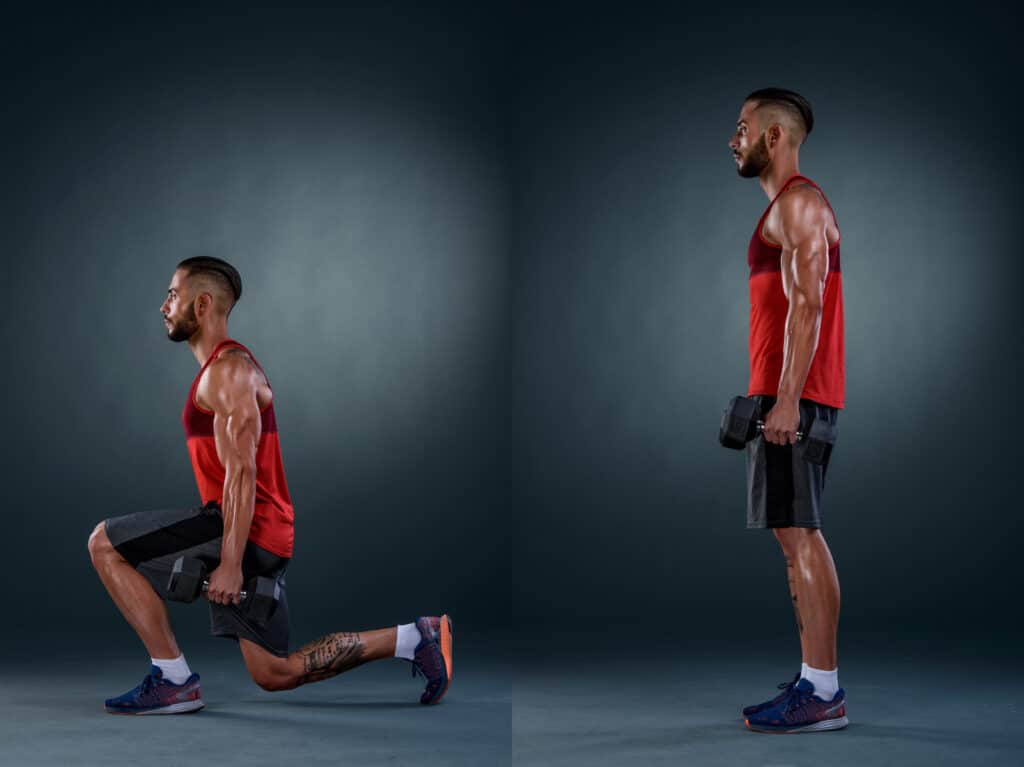
- Dumbbell Bench Press: Add variety by using dumbbells for bench presses. Perform 4 sets of 8-10 reps.
- Lat Pulldowns (Wide Grip): Target different muscle fibers with wide-grip lat pulldowns for 4 sets of 8-10 reps.
- Tricep Pushdowns: Isolate the triceps with tricep pushdowns for 3 sets of 10-12 reps.
Day 7: Rest and Recovery
- Rest: Allow your body to recover completely. Adequate sleep and nutrition are essential during this rest day to support muscle repair and growth.
Considerations for Lifters Over 40
As you age, taking care of your body becomes even more critical. Ensure you incorporate proper warm-ups, cool-downs, and mobility work into your routine. Consulting a fitness professional for guidance on adapting your workouts to your age and needs is advisable.
Don’t Forget Nutrition
Your diet plays a crucial role in maximizing the benefits of your full-body workouts. Ensure you’re consuming an adequate amount of protein, carbohydrates, and healthy fats to support muscle growth and recovery. Staying hydrated is equally important. If you need personalized nutrition guidance, consult a registered dietitian.

Rules for Full-Body Workouts
- Lift Heavy: Progressive overload is essential for muscle growth. Gradually increase the weight you lift to challenge your muscles and promote hypertrophy.
- Perform One Exercise Per Muscle Group: Keep your full-body workout focused and effective by primarily using compound movements that engage multiple muscle groups simultaneously.
- Keep Your Workout to an Hour or Less: Overtraining can hinder progress and increase the risk of injury. Keep your workouts intense but time-efficient.
- Consume a Post-Workout Shake Immediately After Training: Replenishing glycogen stores and initiating the muscle recovery process is crucial. A balanced post-workout shake can help achieve this.
- Change the Order of Your Workouts: To prevent plateaus and maintain interest, periodically alter the order of exercises in your routine. This keeps your body guessing and ensures continued progress.










